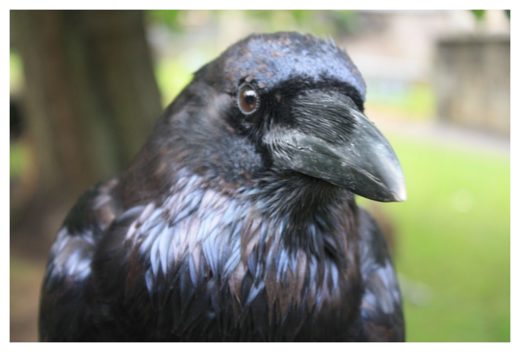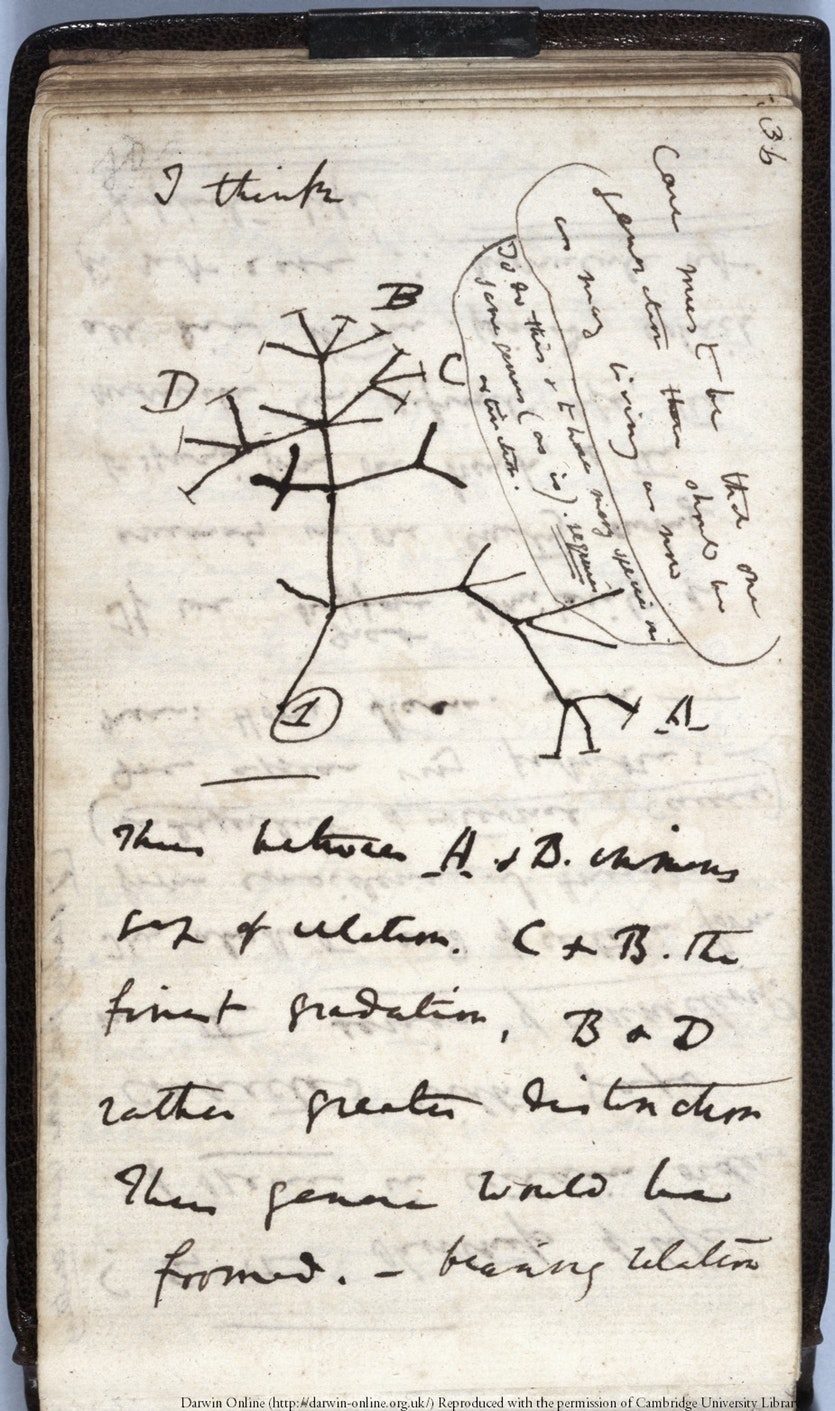
© Stephencdickson/WikipediaA common raven, in its own way reconfiguring Darwinian thought.
A new study of the genetic make-up of ravens has revealed a startling and little-known side to evolution - "reverse speciation". And as science gradually becomes more aware of this phenomenon, researchers are finding it popping up everywhere, including in humans.
In 1837 (or possibly 1838) Charles Darwin sat aboard
HMS Beagle and in his diary sketched the first evolutionary tree, depicting a single species branching out to become many, a visual representation of his ideas about descent with modification. This image is central to the modern understanding of evolution and the generally held belief that the most important evolutionary phenomenon is
speciation - the forming of new species from a parent species.
But this might not be the whole story.
Scientists are beginning to suspect that the evolutionary histories of some organisms aren't all about endless branching and speciation. Rather, some organisms have "reticulated histories", meaning their lines of descent form a network, with lineages occasionally coming together.This, at least, is the conclusion of recent research on the North American common raven (
Corvus corax)
published in the journal Nature Communications. Lead author Anna Kearns, a postdoctoral researcher at the Smithsonian Centre for Conservation Genomics in Washington DC, US, builds on years of research by her colleagues and co-authors to demonstrate that two lineages of common ravens have actually come together to form a new hybrid, which in certain places is replacing both parent species. This is known as "reverse speciation"'.
The common raven is endemic to large parts of the northern hemisphere, and comprises two distinct lineages: the Holartic, by far the most numerous and widespread, and the California, living in western US and Mexico. In the range of the California lineage live Holarctic ravens and another species, the Chihuahuan raven (
Corvus cryptoleucus), which shares a common ancestor with the California. This common ancestor split from the Holarctic in the Pleistocene (a 2.5 million year period ending around 12,000 years ago), meaning the Chihuahuan raven and the California are closely related, while the Holartic is a more distant relative.

© Darwin-online.org.ukDarwin's first sketch showing his idea for an evolutionary tree.
Kearns and an international team of scientists conducted an extensive genomic survey of ravens across North America and discovered that the Holarctic and California lineages seem to have merged into a new hybrid, complete with genomes comprising mosaics of genes from both lineages. This is remarkable, because the two diverged some 1.5 million years ago and had seemingly become unable to reproduce with one another (thus meeting the simplest definition of what constitutes separate species).
The authors present evidence that the two re-established contact more than once over tens of thousands of years and have since managed to overcome reproductive barriers. Surprisingly, the Chihuahuan raven and the California lineage show no signs of hybridisation, despite being far more closely related than the California and Holarctic lineages.
"The extensive genetic data reveals one of the best supported examples of speciation reversal of deeply diverged lineages to date," says Arild Johnsen, an evolutionary biologist at the University of Oslo and another leader of the study.
Interestingly, the team notes that such reverse speciation has also been seen in mosquitoes, butterflies, sunflowers, oaks, bears, wolves, and Darwin's finches. It is even seen in humans: the Neanderthal and Denisovan DNA lurking in the genomes of almost all modern humans shows that we, too, have a complex reticulated evolutionary history and that we are a hybrid of hominid species.
"Next-generation genomic techniques are revealing more and more examples of species with hybrid genomes," says Kearns.
It seems, then, that reverse speciation is a natural evolutionary process, that has almost certainly occurred many times over evolutionary history and is more common than anyone might have thought.
Reader Comments
Really, I feel like I'm reading something like that. I mean the comments at the beginning. This type of speciation event has even a name, it's introgression. If there are bigger differences, it may be an example a of hybrid speciation. Common in plants, rare in animals - but still possible. The scientists do not "gradually become more aware", because they know it. At least the ones working on phylogenetics.
Differences between species, or intraspecies differences, are quite hard to qualitate, while easy to quantitate (yeah, I don't use these ugly terms on daily basis, but they do exists). A big difference in genetic similarity may be superficial for two species wanting to come together, while small difference may be enough to make them incompatible.
By the way, human is most probably a similarly composed species, of branches coming together. Still, it isn't exactly what it was before. There are substantial differences even on small time scales, like couple of thousands or even hundreds of years. My favourite are the series of brain shrinkings.
Important : real speciation has never been observed. Two different species cannot breed an offspring, or their offspring cannot.